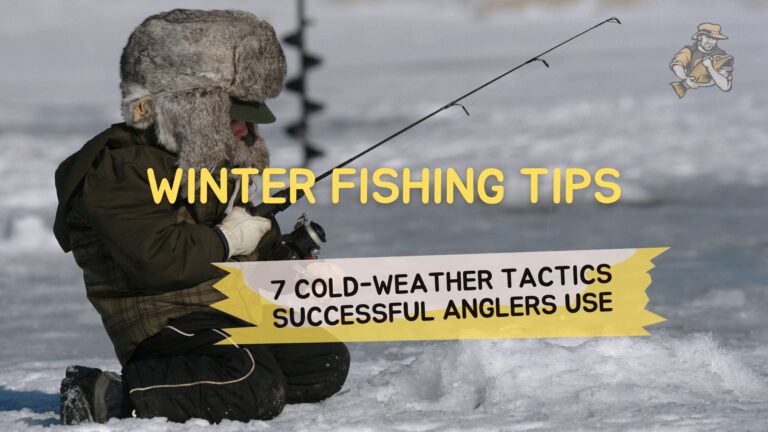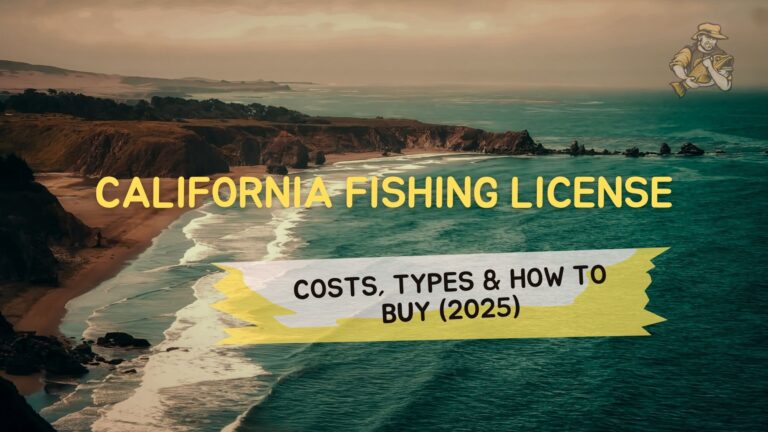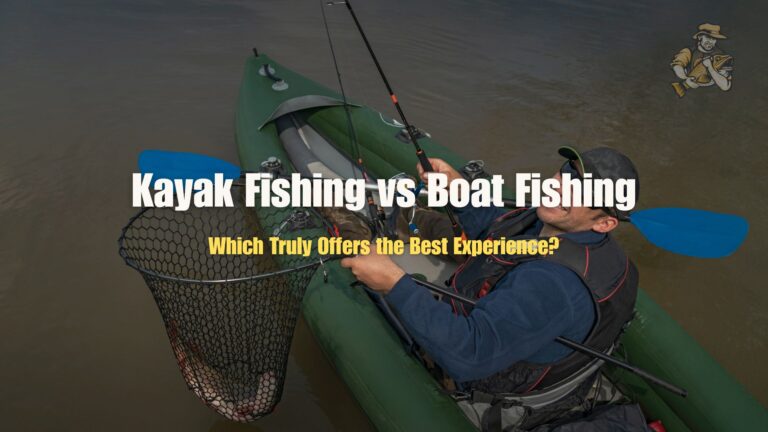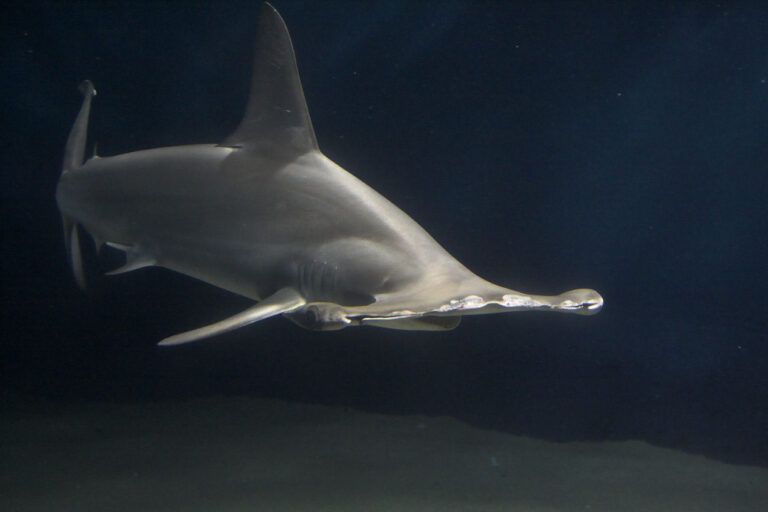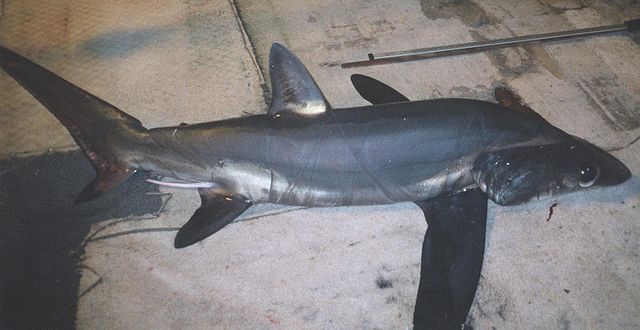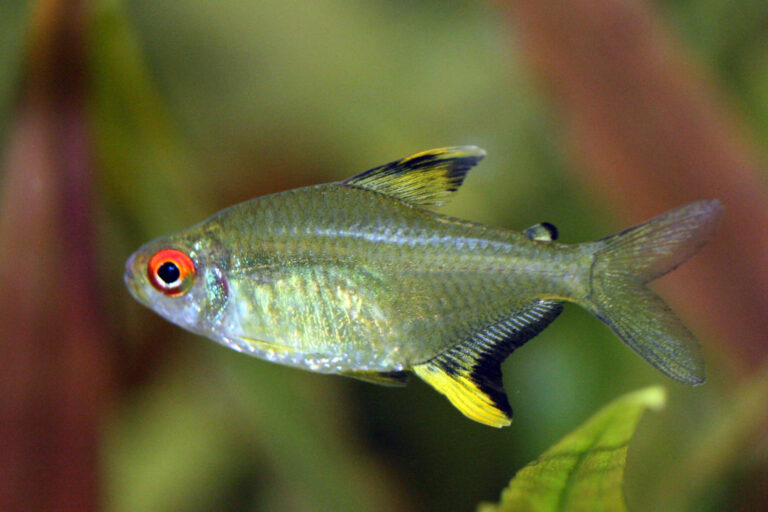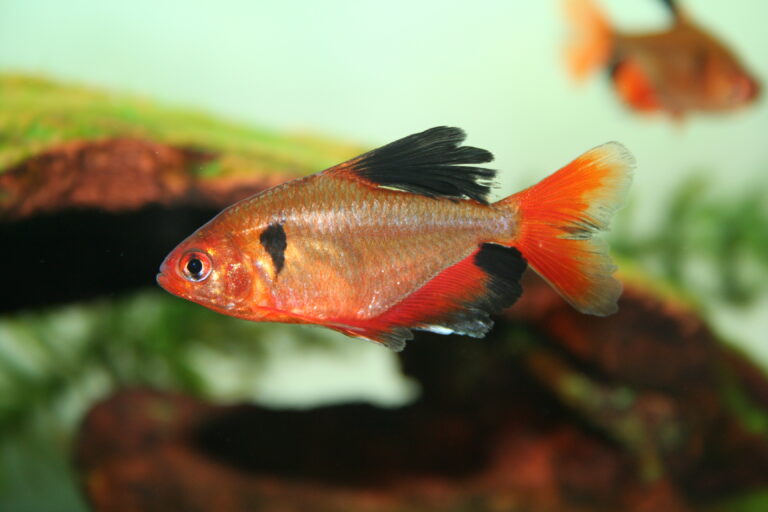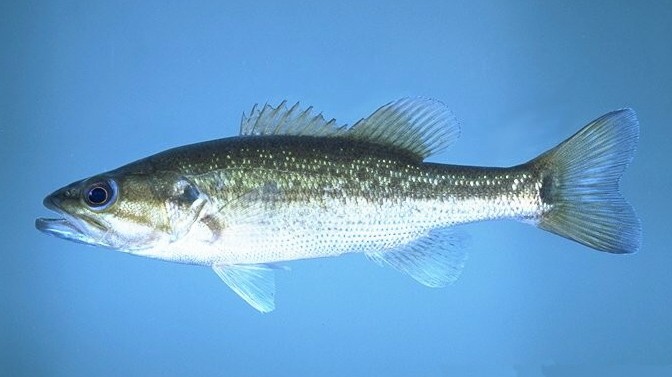Fly Fishing vs Spinning Reels: Choosing the Right Technique
By Adam Hawthorne | Last Modified: May 14, 2025
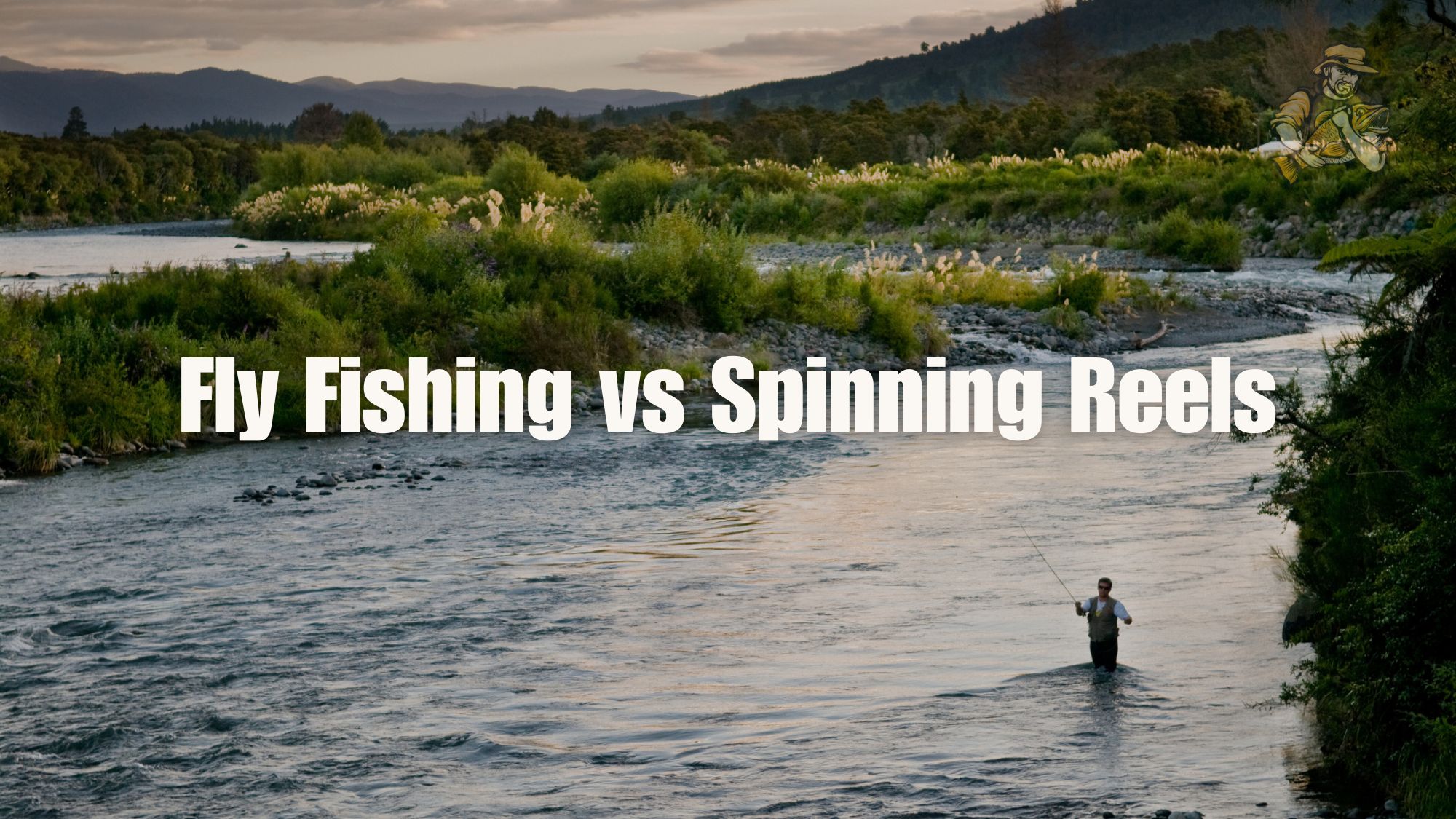
If there’s one debate that never seems to end in fishing circles, it’s fly fishing versus spinning gear. I’ve watched grown men nearly come to blows over this at the boat launch more times than I can count. After three decades with both setups, I’ve formed some pretty strong opinions – and probably made every possible mistake along the way.
Last summer, I was up before dawn on the Au Sable, mist still clinging to the water. I had both my favorite 5-weight fly rod and a light spinning setup in the truck. Made a game-time decision based on the water conditions and went with the fly rod. Three hours later, I’d caught exactly nothing while a guy 50 yards downstream with a spinning reel had landed four nice browns. Humbling? You bet. But that’s fishing for you.
Let’s break down the real differences between these techniques so you can make better choices than I sometimes do.
The Basic Differences Between Fly Fishing and Spinning Reels
When it comes down to it, fly fishing and spinning tackle represent two fundamentally different approaches to catching fish. Understanding these differences is crucial for choosing the right method for your situation.
With fly fishing, the weight of the line carries an essentially weightless fly to the target. The thick, heavy fly line is what you’re actually casting, with the fly just along for the ride. This creates that beautiful, elegant loop you see flying through the air in all those fancy fishing photos.
Spinning gear works exactly opposite – you’re casting the weight of the lure, with the line just following behind. The reel’s job is primarily to store line and provide drag during the fight.
This fundamental difference affects everything from casting technique to the types of fish you can effectively target. I learned this distinction the hard way when I tried to use my fly gear like spinning tackle during my first trout trip to the Upper Peninsula. Let’s just say the tangle I created could have qualified as modern art.
Fly Fishing Gear: The Basics
A typical fly fishing setup includes:
- Fly rod (usually 7-9 feet for trout, longer for bigger fish)
- Fly reel (primarily a line storage device in many situations)
- Fly line (weight-forward, double-taper, etc.)
- Leader and tippet (gets progressively thinner to the fly)
- Flies (dry flies, nymphs, streamers, etc.)
My first fly rod was a hand-me-down fiberglass monstrosity from my Uncle Mike. It cast about as gracefully as throwing a wet sock. Today’s graphite and carbon fiber rods are engineering marvels by comparison. My current go-to is a Sage X 9-foot 5-weight that I probably spent way too much money on, but it casts like an absolute dream.
Spinning Gear: The Basics
A typical spinning setup includes:
- Spinning rod (usually 5-7 feet for most applications)
- Spinning reel (open-faced, closed-faced, or baitcaster)
- Monofilament, fluorocarbon, or braided line
- Terminal tackle (hooks, sinkers, swivels)
- Lures or bait
My first real fishing memory involves a Zebco 33 closed-face reel that my grandfather gave me. Simple, nearly impossible to tangle, and forgiving of a 7-year-old’s questionable technique. I’ve graduated to higher-end equipment since then, but I still keep a couple of Pflueger President spinning reels in my arsenal. They’re not the fanciest, but they’ve never let me down, even when I accidentally dropped one in Lake Michigan last year and didn’t retrieve it until 20 minutes later.
Casting: The Most Obvious Difference
The most visible difference between fly fishing and spinning is the casting technique, and boy is it different. This isn’t just a minor variation – it’s almost like comparing golf to baseball.
Fly Casting Technique
Fly casting is all about rhythm and timing. The classic back-and-forth motion uses the rod’s flexibility to load energy and then release it, propelling the weighted line forward. The fly itself weighs practically nothing.
Learning to fly cast properly took me months of practice. I spent countless evenings in my backyard, knocking over my wife Lisa’s flower pots and occasionally hooking the neighbor’s fence. My casting instructor (yes, I eventually broke down and got lessons) described my early technique as “a man fighting off a swarm of bees.” Not exactly the graceful presentation I was going for.
The toughest part for most beginners is timing the backcast – you need to wait until the line straightens out behind you before starting your forward cast. Rush it, and you’ll end up with what fly anglers affectionately call a “wind knot” (which has nothing to do with wind and everything to do with poor technique).
Spinning Casting Technique
In contrast, spinning gear relies on the weight of the lure to pull the line off the reel. The motion is more like pointing where you want the lure to go.
My 9-year-old son Tommy picked up basic spinning casting in about 15 minutes. The same kid tried fly casting and wrapped the line around his neck twice and somehow got a hook stuck in his hat. Spinning gear is simply more intuitive for most folks.
With spinning gear, distance comes easily. My buddy Dave can fling a 1/4-ounce spoon halfway across Lake St. Clair with his 7-foot medium-action Fenwick. Accuracy develops with practice, but the basic motion is straightforward: load the rod with a backward motion, then snap forward and release the line at the right moment.
Effectiveness: When to Choose Each Method
Here’s where things get interesting – and where I’ll probably annoy purists on both sides. Neither method is inherently “better” – they’re just different tools for different situations.
When Fly Fishing Shines
Fly fishing excels in these scenarios:
- Matching specific insect hatches (the trout aren’t hitting anything else)
- Presenting tiny flies with minimal splash (spooky fish in clear water)
- Fishing very shallow water where conventional lures would snag
- Targeting surface-feeding fish with delicate presentations
- Working complex currents where controlling drift is crucial
I’ll never forget an evening on the Pere Marquette when a massive Hexagenia limbata hatch was happening (that’s the giant mayfly that trout absolutely lose their minds over). Fish were rising everywhere, but they were completely ignoring anything that wasn’t a perfect match to those mayflies. My fly rod with a size 6 Hex pattern was the ticket, while spinning gear would have been utterly useless.
When Spinning Gear Shines
Spinning tackle has the advantage in:
- Covering large areas of water quickly
- Casting in windy conditions (try fly casting in 20 mph gusts – it’s a special kind of torture)
- Fishing deep water effectively
- Throwing heavier lures for bigger species
- Beginner-friendly learning curve
- Casting in tight spaces with brush or trees behind you
Last October, I was targeting smallmouth bass in Saginaw Bay with my brother-in-law. We had 15-20 mph winds creating whitecaps, and I watched a fly angler nearby struggling mightily. Meanwhile, we were effortlessly casting 3/8-ounce tube jigs into the wind and connecting with smallies all afternoon. Right tool for the right conditions.
Cost Comparison: Budget Reality Check
Let’s talk money, because fishing can get expensive quick. One isn’t necessarily cheaper than the other – it all depends on how deep you want to go down the rabbit hole.
Fly Fishing Costs
Entry-level fly setup (functional but basic):
- Rod and reel combo: $150-200
- Line, leader, tippet: $50
- Basic fly selection: $50-75
- Essential accessories: $50-100
- TOTAL: $300-425
My current “regular” setup is considerably more:
- Sage rod: $800
- Abel reel: $400
- Premium lines and leaders: $150
- Comprehensive fly selection: $300+ (I’m a bit of a fly hoarder)
- Waders, vest, tools, etc.: $500+
- TOTAL: Over $2,000
And that doesn’t include my backup rods, specialty lines, or the embarrassing amount I’ve spent on fly tying materials for flies I rarely use. My wife thinks I’m insane, and she’s probably right.
Spinning Gear Costs
Entry-level spinning setup:
- Rod and reel combo: $50-80
- Line: $10-15
- Basic lure selection: $30-50
- Accessories: $25-50
- TOTAL: $115-195
My primary spinning setup:
- G. Loomis rod: $250
- Shimano reel: $200
- Premium lines: $50
- Comprehensive lure collection: $300+
- Tackle storage and accessories: $200
- TOTAL: Around $1,000
Notice how both approaches can be relatively affordable to start, but the sky’s the limit if you get serious. I’ve seen fly reels that cost more than my first car. No joke – a high-end Abel or Tibor can run $1,000+ all by itself. Madness.
Learning Curve: Brutal Honesty
This is where I see a lot of potential anglers get frustrated and give up. The learning curves for these techniques differ dramatically.
Fly Fishing Learning Curve
I’ll be blunt: fly fishing has a steep learning curve. And I mean STEEP. Like “why am I doing this to myself?” steep at times.
To become proficient, you’ll need to master:
- Basic casting mechanics (which feel completely unnatural at first)
- Different types of casts for various situations
- Reading water and currents
- Entomology (yes, you’ll become a bug nerd)
- Proper drift presentation
- Setting the hook with a loose line
It took me nearly two full seasons before I felt even remotely confident with a fly rod. My first dozen trips were exercises in frustration punctuated by occasional moments of accidental success. I still remember my first legitimate trout on a dry fly – a modest 12-inch brown that hit a Parachute Adams on the Jordan River. I celebrated like I’d won the lottery.
The payoff is substantial though. There’s something magical about watching a trout sip your dry fly off the surface. That visual connection to the strike is addictive.
Spinning Gear Learning Curve
Most folks can pick up the basics of spinning gear in an afternoon. Seriously.
The fundamental skills are:
- Basic overhead cast
- Controlling line tension
- Retrieving at appropriate speeds
- Setting the hook
- Playing a fish effectively
My daughter Emma was casting a spinning rod and catching bluegills at age 6. By comparison, I didn’t let her try fly casting until last year (age 9), and even then it was a simplified roll cast from a dock.
That said, becoming truly skilled with spinning gear still takes time. Reading underwater structure, selecting the right lure for conditions, and presenting it naturally all require experience. But the barrier to entry is undeniably lower.
The “Snobbery Factor” – Let’s Talk About It
OK, time for some uncomfortable truth-telling. There’s a level of elitism in some fly fishing circles that can be off-putting to newcomers. Not everywhere, and certainly not with all fly anglers, but it exists.
I encountered this firsthand when I was just starting out. I made the rookie mistake of showing up to the Holy Waters section of the Au Sable with brand new waders and a fly vest with the tags still attached. Might as well have had “TOURIST” stamped on my forehead. A group of anglers upstream barely acknowledged my greeting and moved away like I had some communicable disease.
Contrast that with my experience introducing spinning tackle to newcomers at a local fishing derby. Most spin anglers I know are overjoyed to share knowledge and welcome new participants regardless of their gear quality or experience level.
This isn’t universal – I know plenty of fly fishers who are wonderful ambassadors for the sport, and some spinning gear enthusiasts who are absolutely insufferable. But the perception exists for a reason.
My take? Fish however makes you happy. Both approaches require skill, provide enjoyment, and connect us to nature. Neither deserves more respect than the other.
Fish Species: What Works Where?
Another crucial factor in deciding between fly fishing and spinning gear is your target species. Some fish lend themselves more naturally to one approach over the other.
Species Well-Suited for Fly Fishing
Fly fishing tends to excel for:
- Trout and salmon (the classic fly targets)
- Panfish (bluegill, crappie, etc.)
- Smallmouth bass in clear water
- Carp in shallow flats
- Various saltwater species in the right conditions
I’ve had particularly good success with fly fishing for smallmouth bass on Northern Michigan rivers like the Manistee. They’re absolute suckers for large, bushy streamers that mimic crayfish or baitfish. My go-to is a pattern called a “Murdich Minnow” that’s about 3 inches long with lots of motion.
Species Well-Suited for Spinning Gear
Spinning tackle often works better for:
- Larger predatory fish (pike, muskie, large bass)
- Deep-water species (walleye, lake trout)
- Fishing in fast currents or heavy water
- Most saltwater applications
- Any situation requiring distance casting
Some of my best walleye fishing on Lake Erie has come from trolling with spinning gear and bottom bouncers. You simply can’t effectively get down to 30+ feet where summer walleyes hold using fly gear.
That said, there’s significant overlap. I’ve caught pike on fly gear (though playing a 36-inch pike on an 8-weight is quite the adventure) and plenty of trout on ultralight spinning setups.
My Personal Take: A Hybrid Approach
After hundreds of fishing trips with both methods, I’ve developed what some might call a pragmatic, others might call a heretical approach.
I keep both fly and spinning gear in my truck at all times. My decision on which to use comes down to:
- Water conditions (clarity, depth, current)
- Target species and their current behavior
- Weather (especially wind)
- My honest assessment of which will be more effective
Some days that means switching mid-trip. Last June, I started the morning on the Boardman River with a spinning rod and small Mepps spinners because the water was slightly stained from recent rain. Around noon, I noticed a decent caddis hatch starting, with fish beginning to rise. I hustled back to the truck, grabbed my fly rod, and had an amazing afternoon casting size 16 Elk Hair Caddis patterns to rising fish.
The fishing gods don’t award extra points for difficulty. Use what works.
Practical Factors That Actually Matter
Beyond the philosophical debates, there are practical considerations that might sway your decision:
Storage and Transport
Fly rods typically break down into 2-4 pieces and fit in tubes around 2-3 feet long. Modern spinning rods often do the same, though many one-piece models require more storage space.
My SUV has a rod rack installed specifically because I got tired of breaking down rods every time. Before that, I accidentally closed my truck tailgate on a G. Loomis spinning rod that was definitely not designed to bend that way. An expensive lesson.
Physical Demands
Fly casting all day can be physically taxing, especially with heavier rods or in windy conditions. You’re constantly in motion, false casting, mending line, and making adjustments.
After a shoulder injury a few years back, I found myself reaching for spinning gear more often during rehabilitation. The simplified casting motion put less strain on my recovering muscles.
Solo vs. Guided Fishing
If you’re fishing with guides, they can often compensate for skill deficiencies with either method. A good guide can put you on fish and help with technique regardless of your experience level.
I guided part-time for a few summers on the Pere Marquette, and I could generally get complete beginners catching fish on fly gear within an hour or two. Without that guidance, the learning curve would have been much steeper.
When fishing solo, especially as a beginner, spinning gear generally offers more immediate success and less frustration.
A Strange Day on the Water I’ll Never Forget
I can’t talk about this topic without sharing what happened last spring on the Manistee River. It perfectly illustrates why having both methods in your arsenal is valuable.
I’d been fly fishing all morning with decent success – a few small browns and one respectable rainbow around 16 inches. Around midday, the action died completely as clouds moved in and the temperature dropped. No visible insect activity, no rises, nothing.
After an hour without a strike, I hiked back to the truck and grabbed my spinning rod with a small countdown Rapala. First cast into the same pool I’d been fruitlessly fly fishing produced a solid 19-inch brown. Three casts later, another at 17 inches.
As I was about to make another cast, I noticed something odd happening upstream. The surface was dimpling everywhere – tiny mayflies were suddenly hatching by the thousands. Within minutes, every fish in the river seemed to be rising.
I literally jogged back to the truck, switched back to the fly rod with a size 18 Blue-Winged Olive pattern, and had one of the most memorable evenings of dry fly fishing in my life. I stopped counting after a dozen fish, including a gorgeous 20-inch brown that took a delicately presented dry fly in skinny water.
That day confirmed what I already knew – neither method is superior in all situations. The angler who can adapt has the advantage.
Environmental Impact Considerations
One aspect that deserves mention is the environmental impact of our fishing choices. Both methods can be practiced responsibly or irresponsibly.
Fly Fishing Environmental Factors
Fly fishing tends to have some environmental advantages:
- Single, barbless hooks are common and reduce fish mortality
- Catch-and-release is deeply embedded in the culture
- Flies are typically lead-free and environmentally benign
However, not all aspects are environmentally friendly:
- Some fly materials come from exotic animals/birds (though synthetic alternatives exist)
- Wading can disturb spawning beds if anglers aren’t careful
- Lost flies with lead eyes can contribute to contamination
Spinning Gear Environmental Factors
Spinning tackle has its own environmental profile:
- Many lures contain lead, which is toxic to aquatic environments
- Treble hooks can cause more damage to fish
- More line is typically lost while fishing
On the positive side:
- Tungsten and other lead alternatives are becoming more common
- Single-hook lure modifications are increasingly popular
- Modern lines are better designed to reduce environmental persistence
I’ve personally made a commitment to gradually replace my lead-containing lures with non-toxic alternatives. I’m also religious about picking up discarded line and other fishing trash whenever I see it, regardless of whether it’s “mine.”
So Which Should You Choose?
After all this comparison, you might be wondering which approach is right for you. It comes down to a few key questions:
- What species do you want to target?
- Where will you be fishing most often?
- How much time are you willing to invest in learning?
- What aspects of fishing do you enjoy most?
- Do you prefer immediate results or are you patient with the learning process?
If you primarily want to fish lakes for walleye, pike, and bass, spinning gear is probably your best starting point. If your dream is to catch rising trout on mountain streams, fly fishing might be worth the learning curve.
Bridging the Gap: Hybrid Techniques
Interestingly, the line between these methods has blurred in recent years. Several techniques combine elements of both:
Euro-nymphing
This fly fishing technique uses specialized long rods but minimal fly line, instead relying on the weight of the flies themselves – somewhat similar to how spinning gear uses lure weight. I picked this up a few years ago and it’s become my go-to method for catching selective trout during non-hatch periods.
Centerpin Fishing
Neither truly fly nor spinning, centerpin uses a free-spinning reel to achieve perfect drifts with bait or flies. It’s devastating for steelhead and salmon. My friend Mark is a centerpin wizard on the Betsie River during fall steelhead runs. The learning curve is steep (I’m still terrible at it), but the results are hard to argue with.
Trout Spoons on Fly Gear
Small casting spoons like Kastmasters or Little Cleos can sometimes be cast with heavier fly rods. It’s a bit unorthodox, but I’ve used this technique effectively during high water when traditional fly presentations weren’t working.
FAQ: Fly Fishing vs Spinning Reels
Can you catch the same fish with both methods?
Yes, absolutely. I’ve caught everything from panfish to pike on both fly and spinning gear. The effectiveness has more to do with presentation and location than the gear itself. That said, certain techniques excel in specific situations.
Which method is more expensive to get started with?
Entry-level spinning gear is typically less expensive than entry-level fly gear. You can get a functional spinning setup for under $100, while a beginner fly outfit will usually start around $200-300 for something decent.
Is fly fishing really harder to learn than spinning?
Yes, the basic mechanics of fly fishing take longer to master. Most anglers can pick up the fundamentals of spin casting in an hour or two, while becoming proficient with a fly rod typically takes weeks or months of practice.
Do I need to take lessons to learn fly fishing?
Not necessarily, but they can dramatically accelerate the learning process. I stubbornly taught myself over several frustrating months. A friend took two lessons with a certified instructor and progressed further in a weekend than I did in half a season.
Which method catches more fish?
Neither method inherently catches more fish. It depends entirely on the situation, the angler’s skill level, and the behavior of the fish. I’ve had days where fly fishing outproduced spinning by 10-to-1, and vice versa.
Final Thoughts on Fly Fishing vs Spinning Reels
After 30+ years of fishing both ways, I’ve come to a simple conclusion: the best approach is the one that brings you the most enjoyment and success in your specific circumstances.
Some anglers are drawn to the artistic, almost meditative quality of fly casting. Others prefer the versatility and immediate accessibility of spinning gear. Many, like me, appreciate both for different reasons and situations.
The beauty of fishing isn’t found in dogmatic adherence to one method, but in the connection to the water, the fish, and the natural world. Whether that connection comes through a delicately presented dry fly or a perfectly retrieved crankbait doesn’t really matter in the end.
So rather than picking sides in an unnecessary debate, I’d encourage you to try both. Rent or borrow equipment before investing. Take a lesson or fish with experienced friends. See what resonates with you personally.
And remember – a bad day fishing, regardless of the gear in your hand, still beats a good day doing almost anything else.

Meet Adam Hawthorne
I’m a lifelong fishing enthusiast who’s spent years exploring rivers, lakes, and oceans with a rod in hand. At Fishing Titan, I share hands-on tips, honest gear reviews, and everything I’ve learned about fish and ocean life, so you can fish smarter and enjoy every cast.
Share:

Meet Adam Hawthorne
I’m a lifelong fishing enthusiast who’s spent years exploring rivers, lakes, and oceans with a rod in hand. At Fishing Titan, I share hands-on tips, honest gear reviews, and everything I’ve learned about fish and ocean life, so you can fish smarter and enjoy every cast.
Related Articles
-
Winter Fishing Tips: 7 Cold-Weather Tactics Successful Anglers Use
Most anglers pack away their gear when the temperature drops, but the dedicated few know something the others don’t: winter fishing can be incredibly rewarding…
-
California Fishing License Guide: Costs, Types & How to Buy (2025)
Getting your California fishing license might seem like a hassle, but it’s actually pretty straightforward once you know the ropes. I’ve been fishing across North…
-
Kayak Fishing vs Boat Fishing: Which Truly Offers the Best Experience?
There’s nothing quite like the debate that erupts when you ask a group of anglers whether kayak fishing or boat fishing is superior. I’ve seen…
-
Hammerhead Shark
The Hammerhead Shark represents one of the most distinctive and fascinating apex predators in marine ecosystems worldwide. These remarkable cartilaginous fish, scientifically classified under the…
Fish Species
-
Bigeye Thresher Shark
The Bigeye Thresher Shark represents one of the ocean’s most extraordinary predators, distinguished by its dramatically elongated tail fin that can extend up to half…
-
Lemon Tetra
The Lemon Tetra (*Hyphessobrycon pulchripinnis*) stands as one of South America’s most vibrant freshwater fish species, distinguished by its brilliant yellow coloration and peaceful schooling…
-
Serpae Tetra
The Serpae Tetra (Hyphessobrycon eques) stands as one of South America’s most recognizable freshwater aquarium species, distinguished by its vibrant red-orange coloration and distinctive black…
-
Spotted Bass
The Spotted Bass (Micropterus punctulatus) stands as one of North America’s most distinctive freshwater game fish, renowned for its aggressive feeding behavior and remarkable adaptability…

